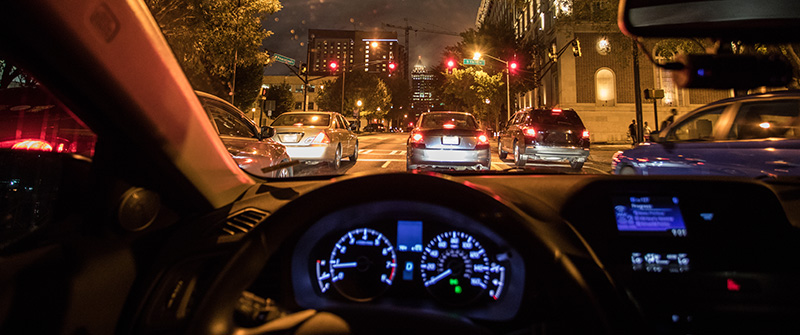
How LASIK Can Make Driving At Night Safer
You don’t have to suffer from blurry vision for driving at night to be difficult, but refractive errors often make operating a vehicle in low-light conditions even trickier and more dangerous. One of the many benefits of LASIK eye surgery is that it can make driving at night easier, giving you more confidence and security on the road.
Adelson LASIK in Metro Detroit explains how LASIK can enhance and improve your safety while driving in poor lighting conditions, particularly at night.
How Refractive Errors Make Driving At Night More Difficult
Refractive errors are visual impairments caused by an issue in the way light is focused when it enters the eye. The eye’s ability to refract (bend) light is crucial for forming a clear image on the retina, which is essential for vision. When the light is not properly focused, it can result in blurred or distorted vision.
Common types of refractive errors include:
- Myopia (nearsightedness): when distant objects appear blurry because the light is focused on the front of the retina rather than directly on it.
- Hyperopia (farsightedness): when close-up objects appear blurry because the light is focused behind the retina rather than directly on it.
- Astigmatism: when the cornea or lens has an irregular shape, causing distorted or blurred vision at both near and far distances.
These visual problems can be corrected in the short-term when wearing glasses and contact lenses. However, LASIK offers a long-term (and therefore more reliable) solution, as it’s able to reshape the cornea to correct the way light is focused on the retina.
Refractive errors can pose a significant challenge for nighttime driving. Individuals with nearsightedness may struggle to see road signs and hazards at a distance, while astigmatism can cause halos and starbursts around lights, reducing contrast sensitivity. Similarly, those with farsightedness may experience trouble reading signs and vehicle instruments.
In general, driving at night is more dangerous for people with refractive errors, as these visual problems lead to challenges adapting in low-light conditions and can compromise peripheral vision. Refractive errors also increase the likelihood of eye strain, fatigue, and increased sensitivity to glare from headlights and streetlights. The overall impact includes slower reaction times and difficulty judging distances accurately on the road.
What It’s Like Driving At Night After LASIK
LASIK is a potential solution to nighttime driving difficulties, offering clearer vision and enhanced safety for driving in poor lighting conditions by correcting the root of the refractive error. Since it’s a long-term solution, this makes LASIK more reliable than glasses and contact lenses, which can only correct vision when being worn.
Many LASIK patients see an immediate difference in their vision following the procedure, including their ability to see at night. Your vision should continue to become clearer in the weeks post-surgery as the eyes heal.
Some of the ways LASIK can enhance night vision include:
- Sharper Contrast And Clarity
LASIK can significantly improve the sharpness and contrast of your vision, making it easier to see objects in poor lighting conditions. This heightened visual acuity makes it easier to identify road signs, pedestrians, and other hazards when behind the wheel, especially at night. - Enhanced Peripheral Vision
LASIK is designed to broaden your field of vision, allowing for increased awareness of movement and activity on both sides. This expanded peripheral vision provides an added layer of safety to your nighttime driving experience, improving your ability to detect potential threats and navigate the road more confidently. - Minimized Glares And Halos
The advanced technology used in LASIK allows the surgeon to smooth the corneal surface, thereby optimizing the eye’s ability to refract light and enhance overall night vision. Many people who have undergone LASIK report a notable reduction in glares and halos around headlights and streetlights following their procedure, further enhancing the comfort and safety of nighttime driving.
When Can You Drive After LASIK?
Another one of the many benefits of LASIK is that it typically has a quick recovery. Most patients are back to their normal routine within a day of the surgery.
At Adelson LASIK, we recommend patients wait at least 24 hours before driving after LASIK. Some patients experience discomfort and/or blurry vision in the immediate hours following their surgery, and you may also choose to take a sedative beforehand. As such, you’ll be advised to arrange for someone to drive you home from the procedure. But given that the recovery from LASIK is generally quick, most patients can get back behind the wheel the very next day.
Why wait? Enhance your nighttime driving experience and discover the other benefits of LASIK by booking a free consultation. This is a chance to confirm your candidacy and have a personalized treatment plan recommended to you based on your visual needs. Book a free, no obligation consult at Adelson LASIK today.